A beautiful welcome : a new work at the entrance to the Custody
This summer, the entrance to the Custody of the Holy Land takes on a new decoration. Designed by a Spanish artist, the work has taken shape in the famous studio of the Armenian ceramicists George and Dorin Sandrouni. Meetings.
A palette of colours has come to wake up the entrance to the Custody of the Holy Land, situated at the New Gate. On the façade which previously was almost white, there are now some bright ceramic tiles. A large central cross replaces the previous one, framed, on the right of the coat-of-arms of the Custody and to the left of the five wounds of Christ, of which St Francis will be marked by receiving the stigmata. Anther panel illustrating St Anthony of Padua and St Francis will also soon be adorning the other side of the facade.
At the origin of this fine project is Fr. Carlos Thomas, who brought together the different people involved in the work: “We wanted to clean the entrance and make it more beautiful with small details. I talked to a Spanish artist and architect, a former postulant, and he proposed these two designs.”
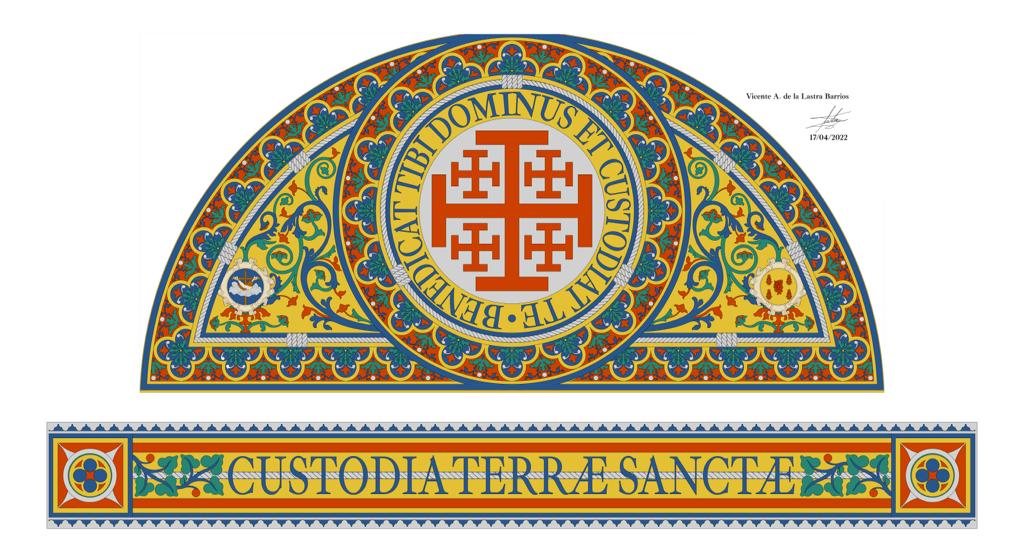
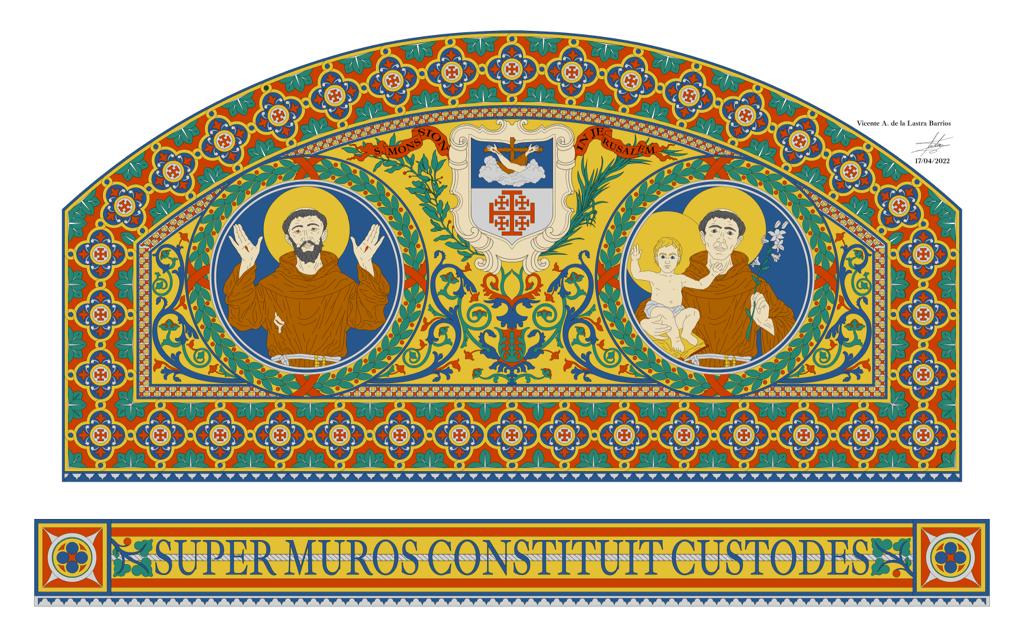
Vincente A. de Lastra Barrios, the artist of the sketches, chose an approach where the decorative elements express that the Custody is a meeting point between the East and the West. In this way, gothic geometric motifs are paired with plant ornamentation which recalls the Byzantine mosaics.
“From the internal side of the door, the friars and visitors will leave the convent under the eyes and blessings of St Anthony, patron saint and protector of the Custody, and of St Francis, the founder of the Order. On the external side, they will [all] be welcomed by the cross of Jerusalem, the symbol of the Holy Land. It is surrounded by the inscription “Benedicat tibi Dominus, et custodiat te”, “May the Lord bless you and keep you,” the first words of the affectionate blessing of St Francis to Brother Leo,” the artist explained to Fr. Carlos.
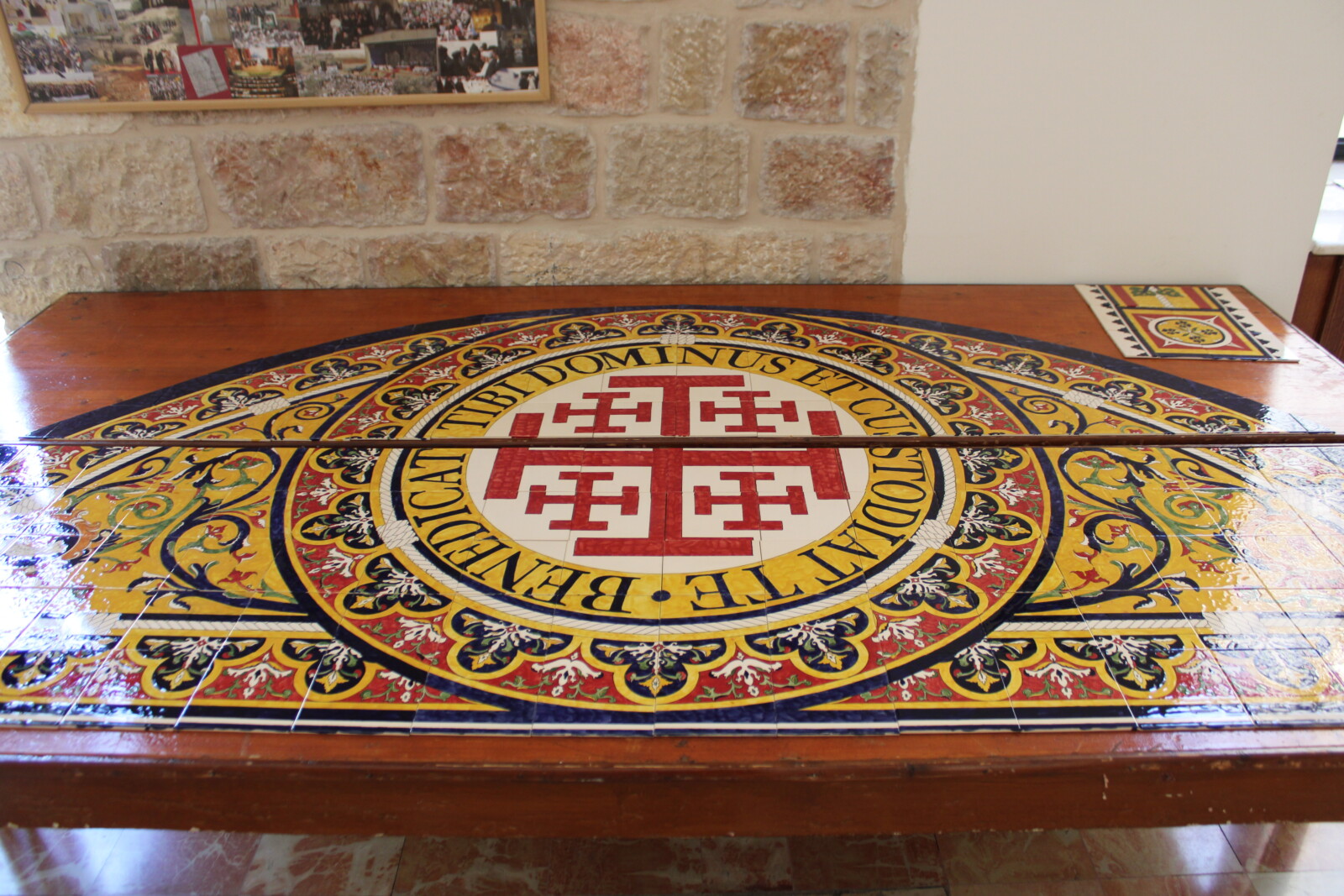
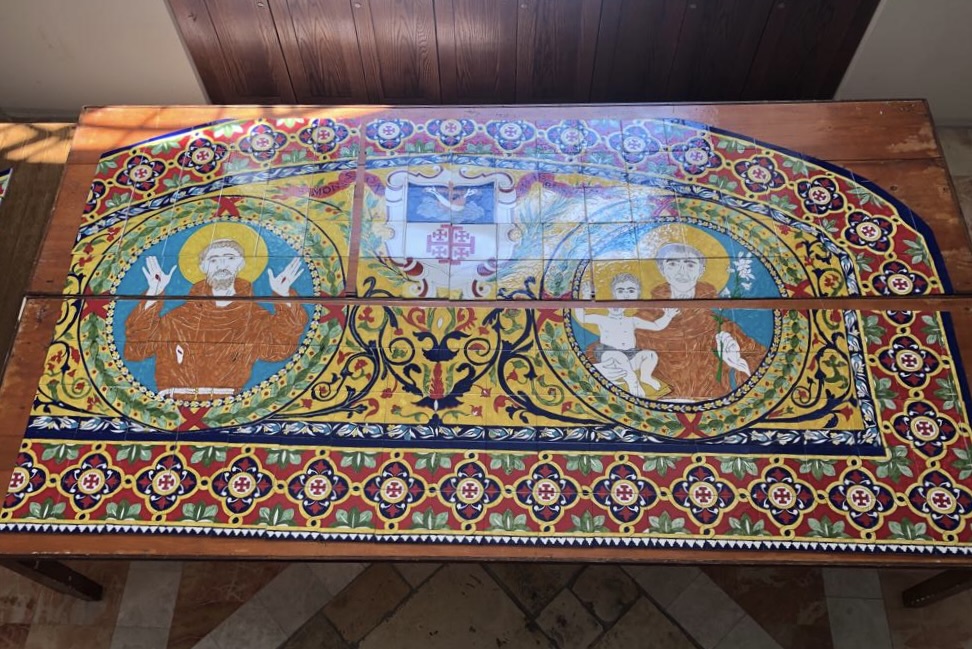
The Franciscan cord runs through each tile to recall the vows of poverty, obedience and chastity. On the internal panel there is the antiphon ‘Super muros (Hierusalem), constituit Custode” “On your walls (Jerusalem) I have posted sentries” (Isaiah, 40, 66), in tribute to the friars who have been the guardians of the Holy Places since 1342.” This is a unique symbolism, all the more so as the ceramic will be placed right next to the ramparts of the Old City of Jerusalem.
George Sandrouni, an Armenian ceramicist who has worked in his studio very close to the convent, since 1983, was chosen to produce the work. In compliance with the double mission and presence of the Custody, at once local and universal, Fr. Carlos strongly wanted to work with a local artist. “As Franciscans, we are connected to everyone. The choice of Armenian ceramics was interesting as the Franciscans were present in Armenia until the 1914 genocide. It was a real challenge for George as it was a style that was very different from his usual work.” As the ceramicist confirms: “The design is by an artist from a completely different culture: we had to interpret it in a Middle Eastern way, finding a compromise.”
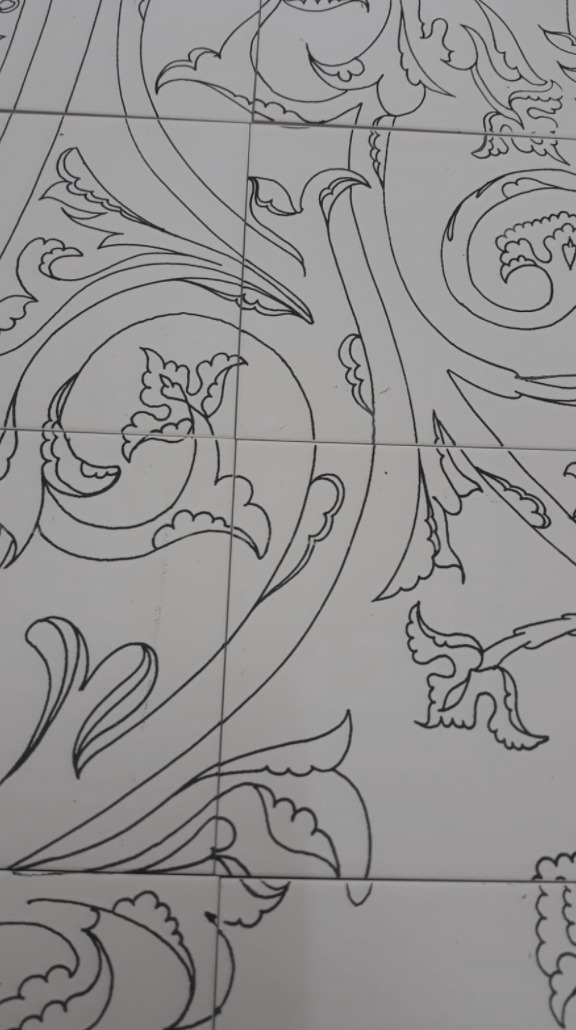
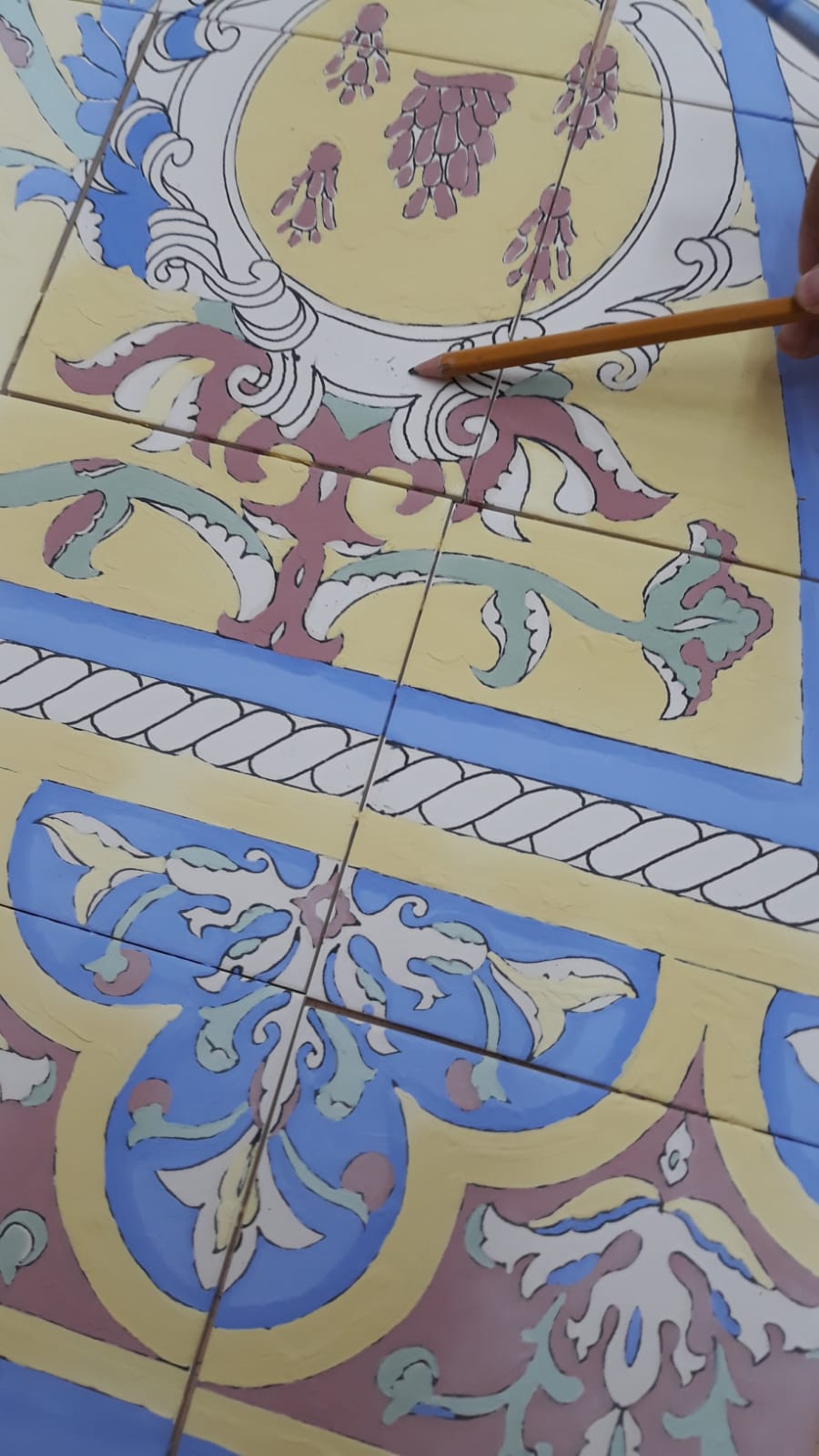
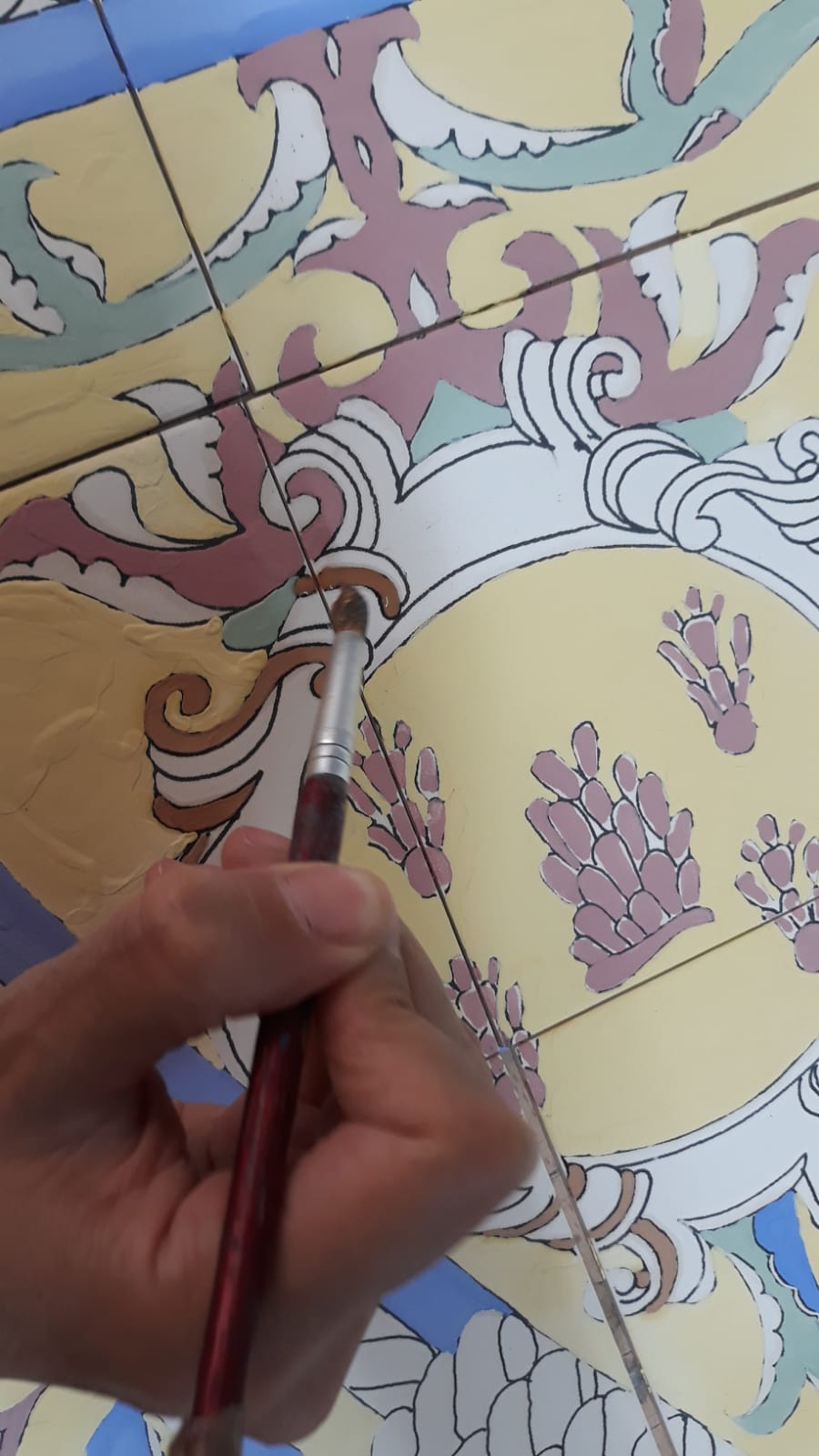
Another difficulty was that the work is gigantic, and the Sandrounis’ studio is… very small. “I myself find it hard to believe that such a large piece could have come out of such a small studio! Besides, I was not expecting this work to be so huge,” George continued.
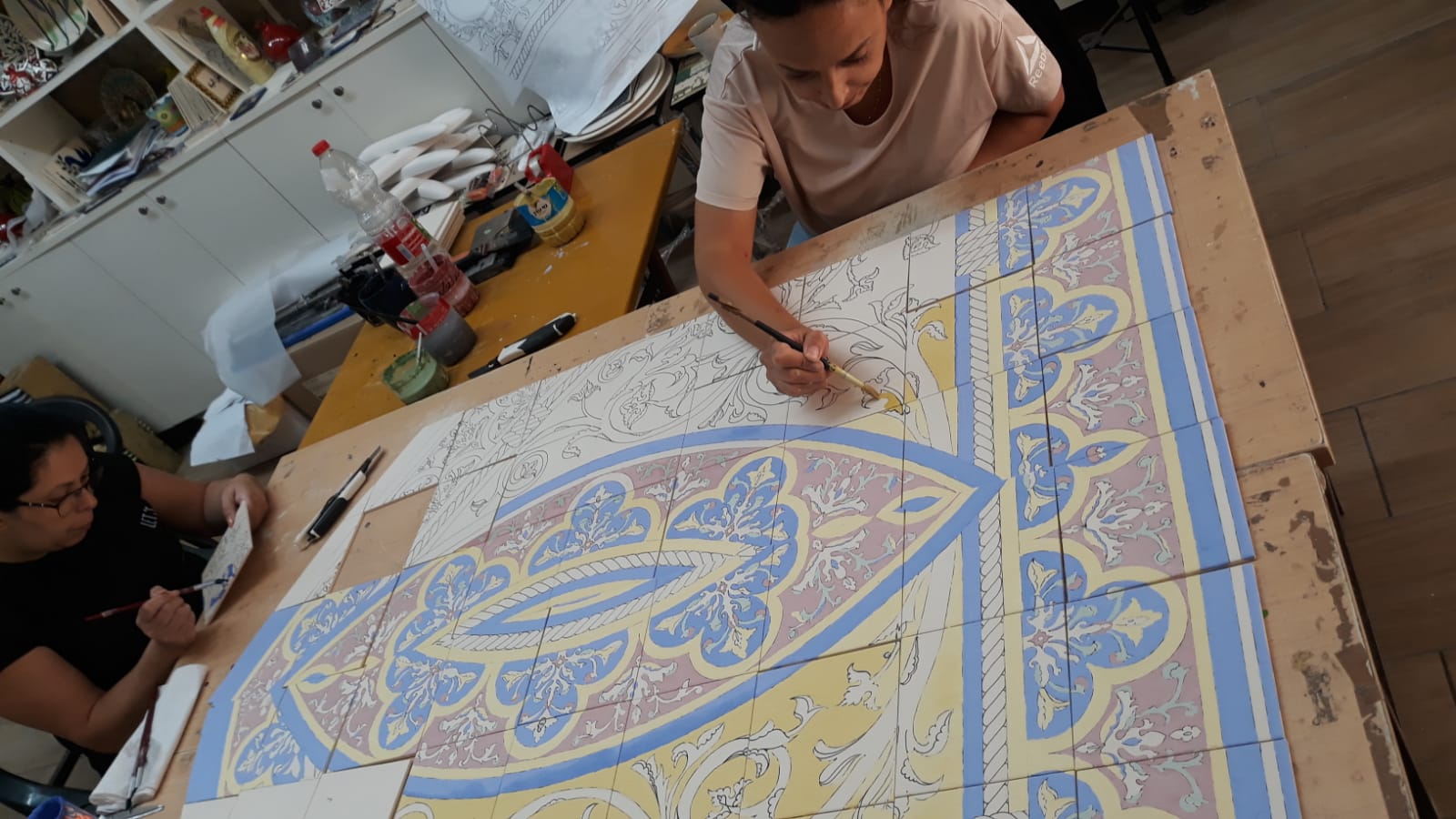
If “the presence of Christians has to make itself heard more through our actions, I think that art reminds us that God is beautiful. Art can allow us to meet even if we do not profess the same religion.”
For George Sandrouni, making this work was effectively an enactment of his faith: “Producing this type of order is not just working, it is truly uniting my faith, my prayer (we listen to religious songs while we work) and my trade. It is particularly gratifying to concretely see our daily life at the service of what we believe in.”
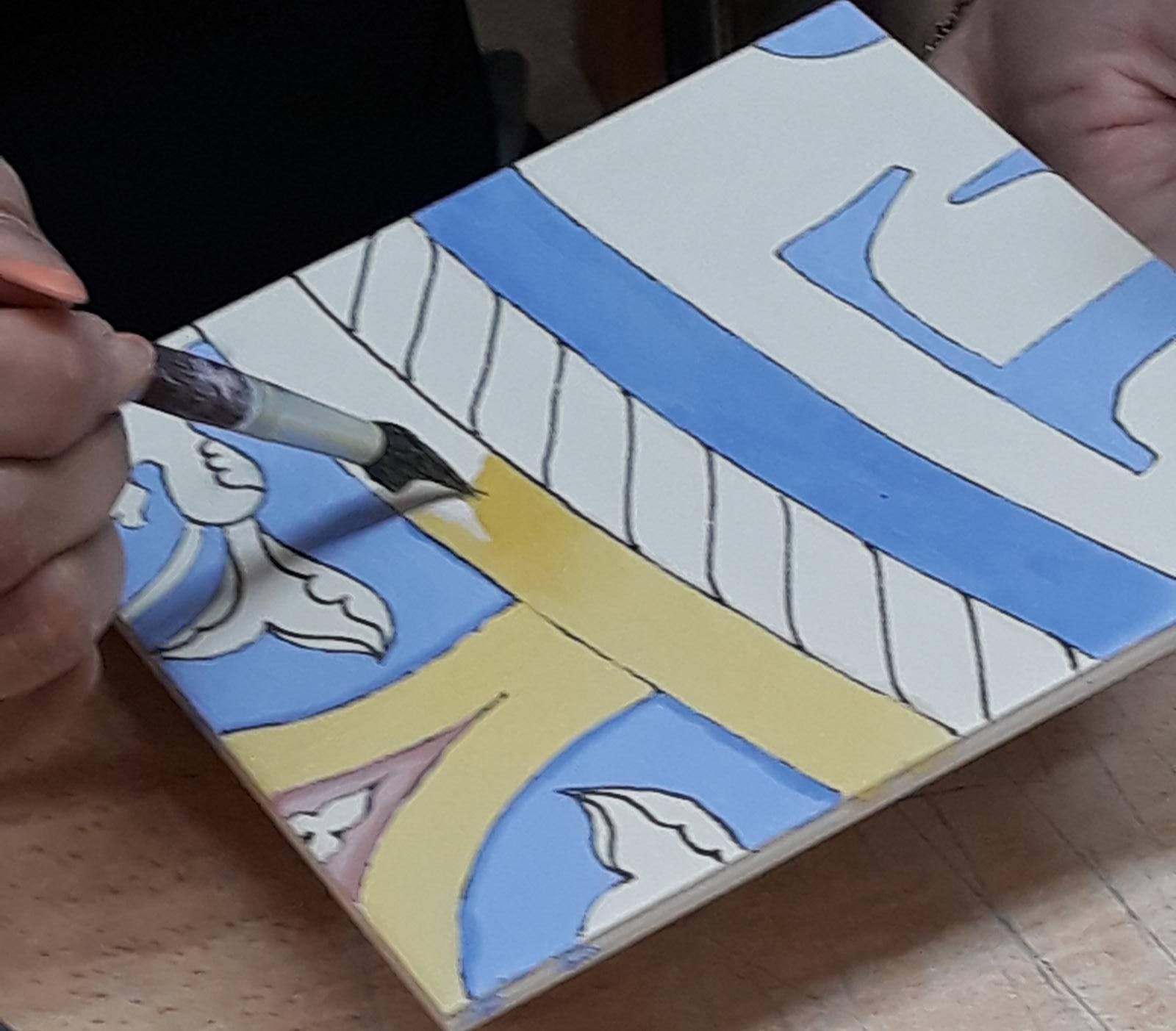
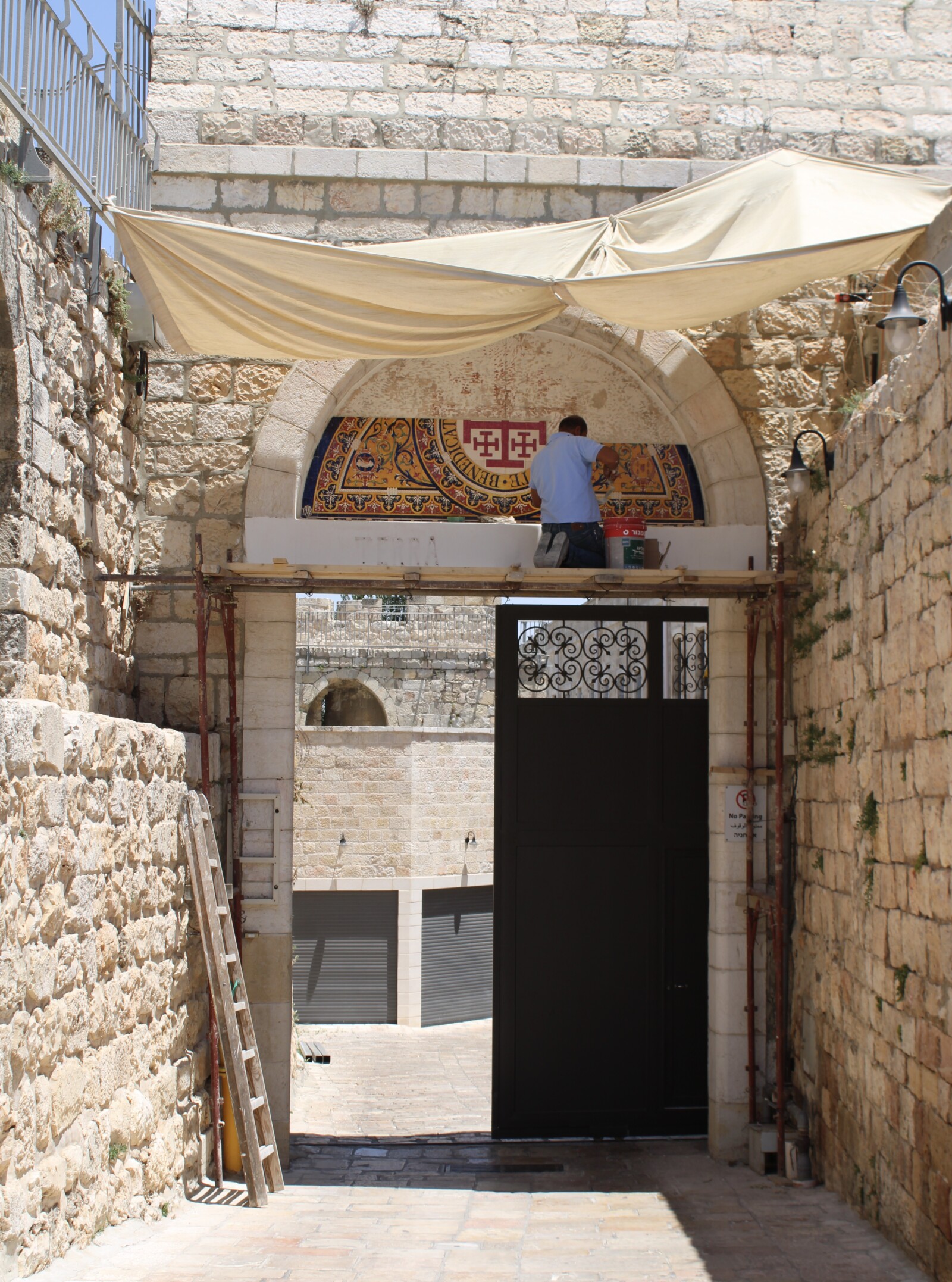
If the Custody has been able to receive, over the centuries, numerous works, the finest of which will be on display in the Terra Sancta Museum, it also commissions them, encouraging local artists. “We are the heirs of this tradition,” concluded Fr. Carlos, “we try to make these places a space where it is pleasant to live together. With this ceramic and this very original work, we are presenting something that is both new and anchored in numerous traditions. And we know that it will not be the last one.”
(Translated from French by Joan Rundo)



